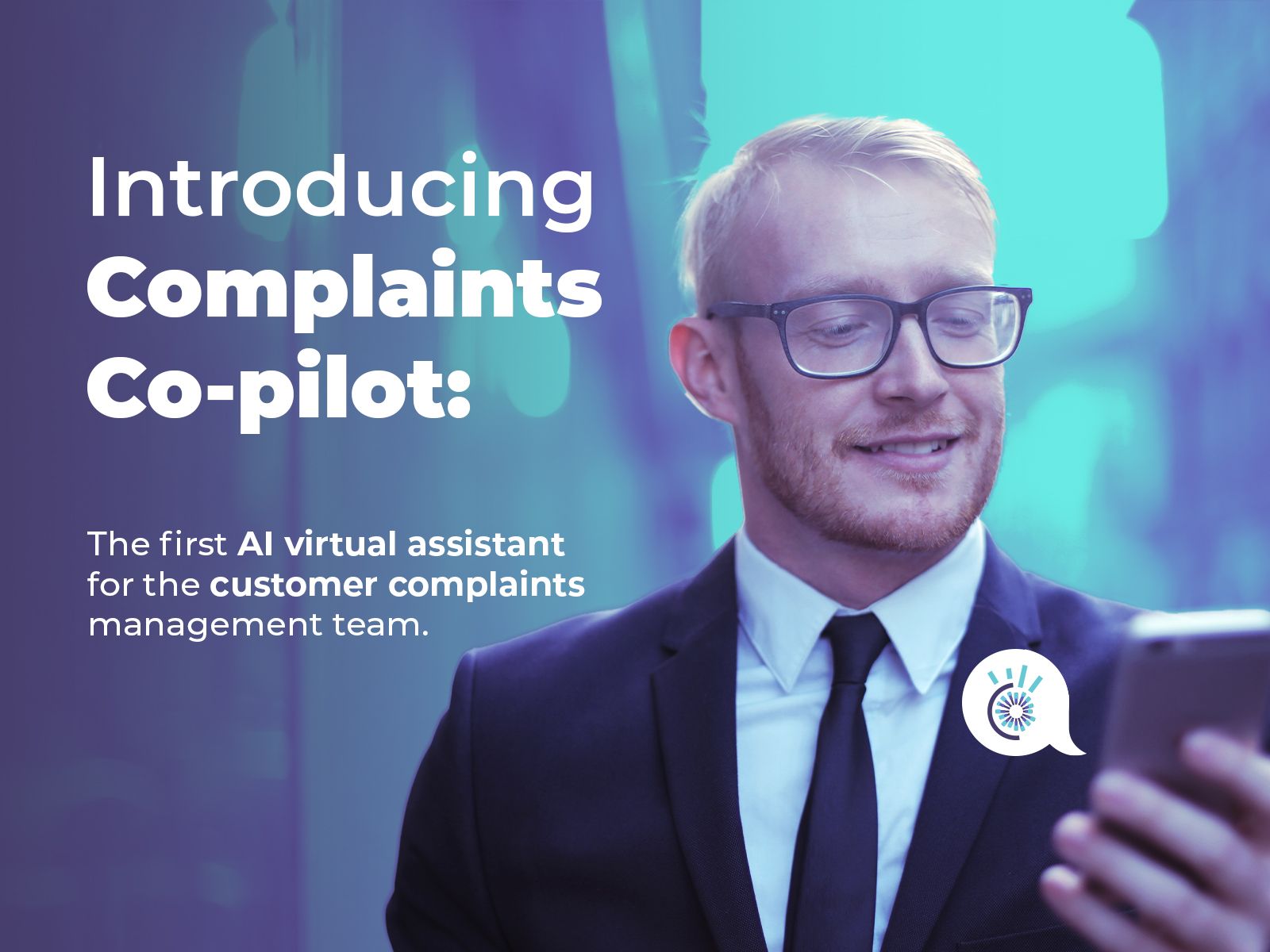Complaints Co-pilot

At Cognitive View, our vision is to enable companies to restore customer trust by creating a customer-centric culture while improving compliance and reducing conduct risk. Developing an excellent complaint resolution team is crucial in handling customer complaints fairly and promptly to reduce conduct risk.
Handling extensive customer complaints can be overwhelming. Moreover, complaints can vary in complexity, requiring careful analysis and investigation to effectively understand and address the underlying issues. Customers expect quick responses when they lodge complaints, requiring faster resolution to avoid customer dissatisfaction and negative brand perception. Ensuring consistent and standardized responses to complaints can be challenging, particularly when multiple customer service agents are involved.
Traditional methods rely heavily on manual processes, such as manual data entry, categorization, and analysis. These processes are time-consuming and prone to human errors, impacting response times and overall efficiency. As the number of complaints grows, it becomes difficult to handle them efficiently using traditional methods. In addition, a lack of personalization may result in generic responses not addressing individual customers' needs and concerns.
To bring much-needed automation to overwhelmed complaints teams, we've continued to invest in and develop a generative AI-based co-pilot for customer complaint professionals on top of some of our existing capabilities. Given the ability of large language models to interpret texts and integrate data, these models could become great assistants.
A co-pilot for customer complaints acts like a virtual assistant, anticipating needs and providing insights for faster and fair complaint resolution, essentially offloading many of a dispute resolution professional's repetitive and tedious daily tasks.
This co-pilot creates more time to focus on analysis and the customer experience in the decision-making process.
A customer complaints co-pilot helps busy complaints teams on meaningful work and augment better customer experience by supporting three fundamental questions.

- Help me to understand the complaint
- Help me to resolve the complaint
- Help me to respond to the complaint
Help me to understand the complaint.
The initial phase in a complaint resolution is about understanding the customer's need or the top reason why a customer has complained. Sometimes the customer is frustrated and angry when they complain. The initial complaint is either lodged via a call center, social media, or website, which is unstructured and hard to understand. However, given the ability of large language models to interpret complex unstructured texts, they can analyze the complaint and provide a summary and observation of top issues.
Help me to resolve the complaint.
In the second phase of the complaint resolution, a complaint must be resolved. Again, large language models are very good at extrapolating complaint resolution data points of similar complaints from the industry and the company. As a result, the system can create a list of novel approaches for solving a particular complaint and curate a set of recommendations regarding previous such resolutions.
Help me to respond to the complaint.
Finally, the firm needs to respond to the customer or ombudsman body if it is escalated. Here, the system can use large language models’ ability to write without human involvement. For example, a response can be generated using a set of existing templates and might even be adjusted to find the right tone for the customer. Templates are reusable patterns that a user uses repetitively. Therefore, creating templates makes the end user spend less time creating prompts as we have prepackaged them.
Large language models are inherently good at learning from prior experiences. They use previous resolutions as feedback and train themselves to utilize the information given in their interactions with a particular user.
Their knowledge base concerning a user thus grows with any exchange, basically hard-coding the positive feedback loop we described above. Moreover, these systems can also make inferences from similar customers, speeding up the learning process even more.
Increase the ROI of existing complaint management systems with a co-pilot plugin.
Complaints management systems with human workflow or process automation capabilities alone are limited. When combined with cognitive automation with Natural Language Processing (NLP), process automation is crucial in driving the necessary efficiency.
Questions like the ones below can help us understand how to turn customer complaints into a strategic advantage.
- Where does the complaint resolution team spend most of their time?
- What is our cost per complaint?
- How can staff learn about new and evolving complaint patterns in real time?
- How do we meet the complaint resolution timeframe consistently?
- How do we address systemic risk & support financial inclusivity?
Complaint management teams can now plugin Cognitive View co-pilot for complaints into the existing complaint management system, which augments the current workflow capabilities.
Start creating value with AI.
Customer expectation is continuously changing so, as are regulatory requirements. As a result, all eyes are on CX and Complaint management leaders, many of whom have an opportunity to reimagine what complaint resolution looks like in the future. But to create a culture that empowerment of complaint resolution professionals, they need to spend their time focussing on customer value creation and less time on repetitive, monotonous activities.
At Cognitive View, we realize that every dispute resolution professional deserves better. However, to build that conducive environment — where no complaint resolution member is left behind — Complaint management teams can’t rely on a solution that’ll only solve a narrow set of use cases. Instead, they need a comprehensive platform powered by AI.
